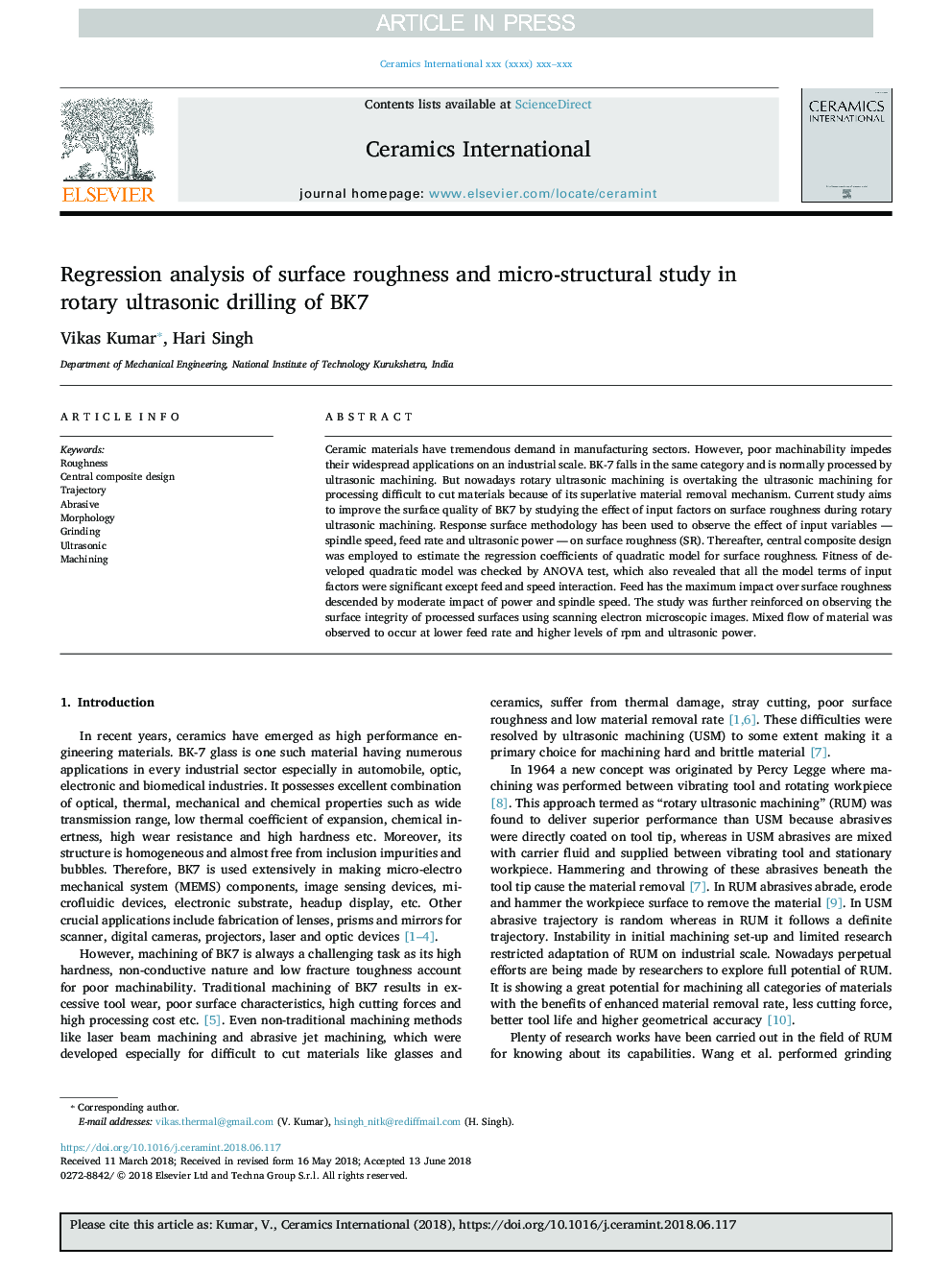| کد مقاله | کد نشریه | سال انتشار | مقاله انگلیسی | نسخه تمام متن |
|---|---|---|---|---|
| 7886172 | 1509784 | 2018 | 9 صفحه PDF | دانلود رایگان |
عنوان انگلیسی مقاله ISI
Regression analysis of surface roughness and micro-structural study in rotary ultrasonic drilling of BK7
دانلود مقاله + سفارش ترجمه
دانلود مقاله ISI انگلیسی
رایگان برای ایرانیان
کلمات کلیدی
موضوعات مرتبط
مهندسی و علوم پایه
مهندسی مواد
سرامیک و کامپوزیت
پیش نمایش صفحه اول مقاله

چکیده انگلیسی
Ceramic materials have tremendous demand in manufacturing sectors. However, poor machinability impedes their widespread applications on an industrial scale. BK-7 falls in the same category and is normally processed by ultrasonic machining. But nowadays rotary ultrasonic machining is overtaking the ultrasonic machining for processing difficult to cut materials because of its superlative material removal mechanism. Current study aims to improve the surface quality of BK7 by studying the effect of input factors on surface roughness during rotary ultrasonic machining. Response surface methodology has been used to observe the effect of input variables â spindle speed, feed rate and ultrasonic power â on surface roughness (SR). Thereafter, central composite design was employed to estimate the regression coefficients of quadratic model for surface roughness. Fitness of developed quadratic model was checked by ANOVA test, which also revealed that all the model terms of input factors were significant except feed and speed interaction. Feed has the maximum impact over surface roughness descended by moderate impact of power and spindle speed. The study was further reinforced on observing the surface integrity of processed surfaces using scanning electron microscopic images. Mixed flow of material was observed to occur at lower feed rate and higher levels of rpm and ultrasonic power.
ناشر
Database: Elsevier - ScienceDirect (ساینس دایرکت)
Journal: Ceramics International - Volume 44, Issue 14, 1 October 2018, Pages 16819-16827
Journal: Ceramics International - Volume 44, Issue 14, 1 October 2018, Pages 16819-16827
نویسندگان
Vikas Kumar, Hari Singh,